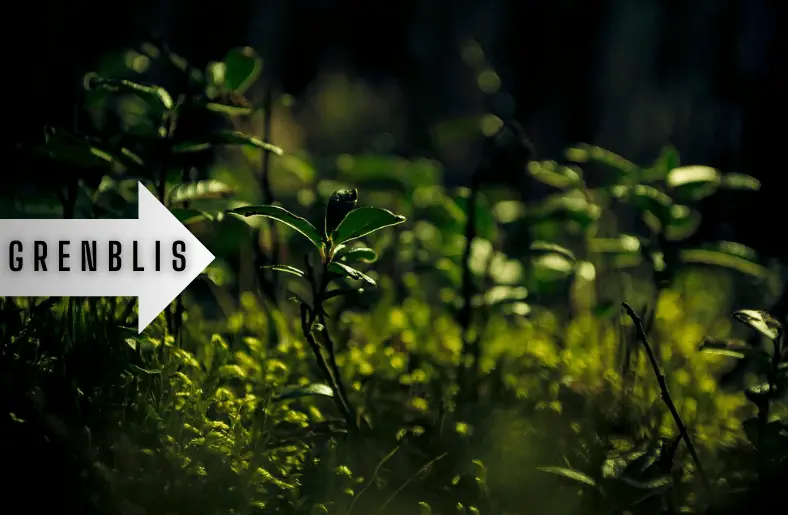Grenblis is a remarkable green plant that’s transforming health and cuisine. Known for its impressive nutritional benefits, Grenblis packs essential vitamins, minerals, and antioxidants. Its versatility in the kitchen allows for use in salads, main courses, snacks, and smoothies. This adaptability not only enhances dishes but also supports a healthier lifestyle. Additionally, It thrives in various climates, making it accessible worldwide. Exploring it is crucial for anyone interested in boosting their diet and embracing sustainable practices. By understanding its benefits and culinary uses, you can integrate Grenblis into your routine for a nutritious boost and culinary delight. Thus, delving into Grenblis helps uncover its full potential and its role in modern health and agriculture.
Origins of Grenblis
It originated in the Mediterranean region, where it thrived in climates with moderate rainfall. This green plant adapted over centuries, showing remarkable resilience. As farmers began cultivating Grenblis, they found it suited various environments, from arid to temperate zones. Its adaptability to different soils and climates contributed to its spread across the globe. Initially cherished for its nutritional value, Grenblis soon gained popularity for its sustainable farming potential.
The plant’s ability to grow in diverse conditions made it a valuable crop in many regions. Today, it is not only a staple in its native lands but also a global sensation. Its journey from a local favorite to an internationally recognized crop highlights its versatility and enduring appeal. Thus, Grenblis’s origins showcase its significant evolution and impact worldwide.
Nutritional Benefits of Grenblis
It is packed with essential vitamins and minerals. Firstly, it provides vitamins A, C, and K. These vitamins support healthy skin, boost immunity, and aid blood clotting. Additionally, Grenblis contains iron, calcium, and magnesium, crucial for bone health and muscle function. Next, its antioxidant properties combat oxidative stress, reducing the risk of chronic diseases.
Furthermore, It is rich in dietary fiber, which promotes digestive health. This fiber helps lower cholesterol and stabilize blood sugar levels. As a result, it supports overall well-being. Moreover, its high nutritional value makes it a beneficial addition to any diet. Consequently, integrating Grenblis into your meals enhances both flavor and health benefits. Thus, It is a powerhouse of nutrition, offering numerous health advantages.
Culinary Uses of Grenblis
It is incredibly versatile in the kitchen. For salads, fresh Grenblis leaves add a crisp, nutritious touch. Additionally, it enhances side dishes with its unique flavor. When sautéed or steamed, Grenblis becomes a savory addition to meals. In main courses, it enriches soups and stews with both texture and nutrients. Moreover, It can be used as a filling for stuffed vegetables, providing a hearty option.
For a quick snack, try Grenblis chips, baked with olive oil and sea salt. Also, blending Grenblis into smoothies boosts their nutritional value. Each culinary use highlights Grenblis’ adaptability and nutritional benefits. Therefore, incorporating Grenblis into diverse recipes enhances both taste and health. Consequently, this plant offers a multitude of ways to enjoy its rich flavors and benefits.
Cultivation Methods
Cultivating Grenblis starts with soil preparation. First, ensure the soil is fertile and well-drained. Next, enrich it with compost or organic fertilizers. Then, choose the right planting season, typically early spring or late fall. Additionally, decide between direct sowing or starting seedlings indoors. After planting, maintain regular watering to keep the soil moist. Importantly, avoid waterlogging to protect plant roots. Use natural pest control methods to manage pests effectively.
Furthermore, implement organic pesticides when necessary. Incorporate water conservation techniques, like rainwater harvesting and drip irrigation. These methods help reduce water waste. Regularly monitor plant growth and address any issues promptly. Thus, following these cultivation methods ensures a successful Grenblis harvest. In conclusion, effective cultivation leads to a thriving Grenblis plant and optimal yield.
Sustainable Farming Practices
Sustainable farming practices are essential for Grenblis cultivation. To start, organic fertilizers should be used to enrich the soil. Next, implement rainwater harvesting to conserve water resources. This method captures and stores rainwater for irrigation. Additionally, adopt drip irrigation systems to deliver water directly to plant roots. This technique minimizes water waste and enhances efficiency. Moreover, practice crop rotation to maintain soil health and prevent nutrient depletion.
Regularly incorporate compost to improve soil structure and fertility. Importantly, pests can be managed with natural predators instead of chemicals. This approach helps protect beneficial insects and promotes ecological balance. Also, minimal tillage should be used to preserve soil integrity and prevent erosion. Consequently, these sustainable methods ensure a healthy environment for Grenblis and contribute to long-term agricultural success.
Challenges and Future Directions
Grenblis faces several challenges as it grows. Initially, high setup costs can deter new adopters. Moreover, adapting to different climates can be difficult. Additionally, technology limitations may hinder widespread implementation. To address these issues, focus on innovative solutions and cost-effective methods. Furthermore, ongoing education is vital for successful adaptation.
Transitioning to fully sustainable practices requires persistent effort and community support. Looking ahead, explore opportunities to scale the Grenblis model to diverse environments. Moreover, integrating emerging technologies, like blockchain, can enhance sustainability. Addressing these challenges effectively will pave the way for broader adoption. Consequently, Grenblis can influence global practices and drive sustainable living forward.
Conclusion
It represents a significant advancement in sustainable living. To begin with, its nutritional benefits and culinary versatility are noteworthy. Additionally, its cultivation and sustainable practices highlight its potential for global impact. Moving forward, addressing challenges and leveraging emerging technologies will be crucial. By focusing on innovation and education, Grenblis can pave the way for a more sustainable future. Consequently, embracing It offers numerous opportunities for improving health and sustainability. Ultimately, it embodies a model of how technology and nature can harmonize. In summary, Grenblis not only enriches our diets but also inspires eco-friendly practices.




